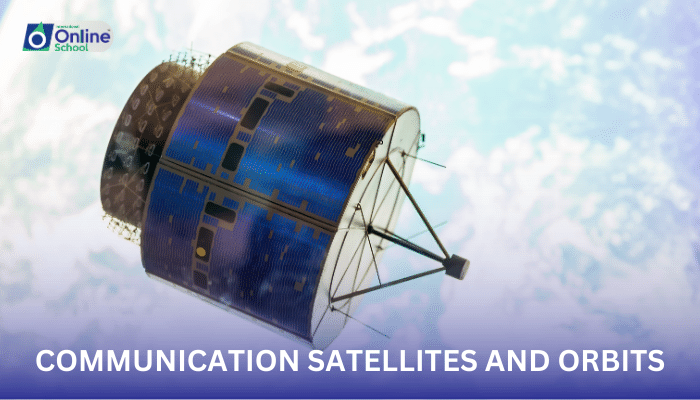
Learning Outcomes
i. Comprehend the concept of communication satellites, recognizing their role in enabling global communication.
ii. Explore the characteristics of communication satellites, including their design, equipment, and transmission capabilities.
iii. Understand the concept of geostationary orbits and their significance for communication satellites.
iv. Recognize that geostationary orbits allow communication satellites to appear stationary from Earth's perspective, enabling v. continuous coverage of specific regions.
vi. Gain insights into the applications of communication satellites in various fields, such as telecommunications, television broadcasting, and internet access.
Introduction
In our modern world, seamless communication across vast distances is not just a luxury; it is a necessity. From connecting with loved ones across continents to accessing global information instantly, the ability to communicate effectively has transformed our lives. At the heart of this revolution lie communication satellites, artificial messengers orbiting Earth, bridging the gaps between us and enabling real-time communication worldwide.
i. The Design and Equipment of Communication Satellites
Communication satellites are marvels of engineering, designed to relay signals between different points on Earth. They are equipped with powerful antennas, highly sensitive receivers, and transmitters capable of sending and receiving signals across vast distances. These satellites are meticulously designed to withstand the harsh environment of space and operate efficiently for extended periods.
ii. Geostationary Orbits: The Key to Continuous Coverage
Geostationary orbits, a special type of Earth orbit, play a crucial role in communication satellites. These orbits are located at an altitude of approximately 35,786 kilometers directly above the Earth's equator. Satellites in geostationary orbits maintain a fixed position relative to Earth, appearing stationary from an Earth observer's perspective.
iii. The Significance of Geostationary Orbits for Communication
The positioning of communication satellites in geostationary orbits offers several advantages for global communication:
Continuous Coverage: Satellites in geostationary orbits remain visible from a specific region on Earth, ensuring continuous communication coverage.
Reduced Signal Delay: The fixed position of these satellites minimizes signal delay, enabling real-time communication.
Simplified Tracking: Earth-based antennas can point permanently towards a specific geostationary satellite, eliminating the need for continuous tracking.
iv. Applications of Communication Satellites: Bridging the Global Divide
Communication satellites have revolutionized various fields, including:
Telecommunications: Satellites facilitate voice calls, internet access, and mobile phone communication across vast distances.
Television Broadcasting: Satellites enable the transmission of television signals to large regions, providing access to a wide range of channels.
Internet Access: Satellites provide internet connectivity to remote areas and regions with limited terrestrial infrastructure.
Military Communication: Satellites enable secure and reliable communication for military operations.
Communication satellites have become an indispensable part of our modern world, seamlessly connecting people and information across the globe. Their presence in geostationary orbits has transformed the way we communicate, enabling real-time interactions, global news coverage, and access to information from anywhere on Earth. As technology advances, communication satellites continue to evolve, promising even faster data transmission, wider coverage, and new opportunities for connecting the world.